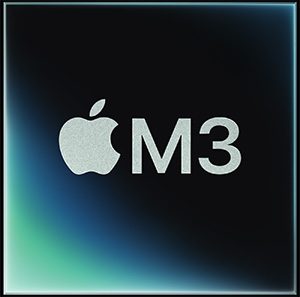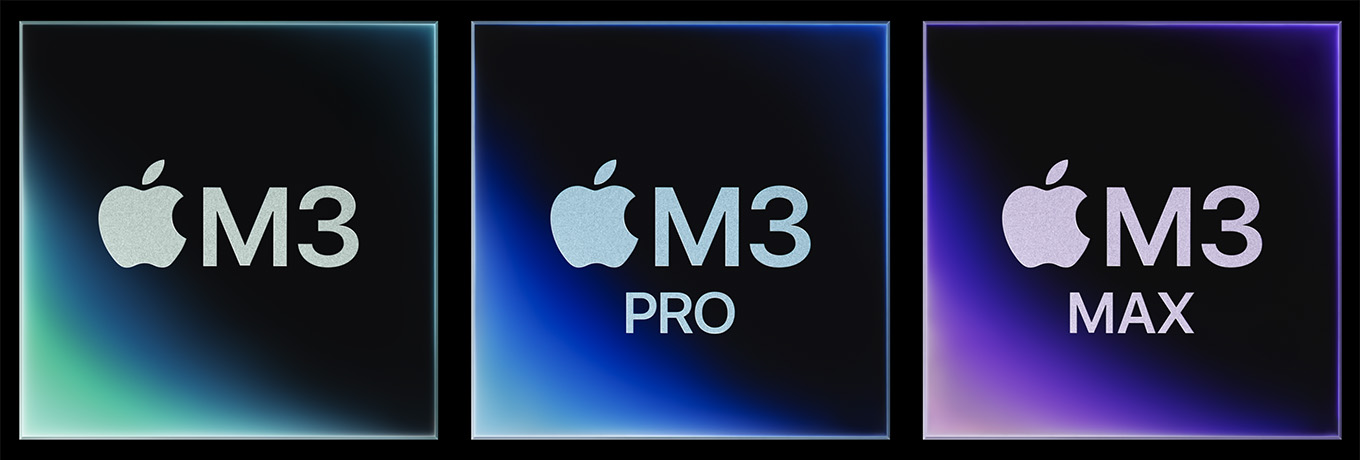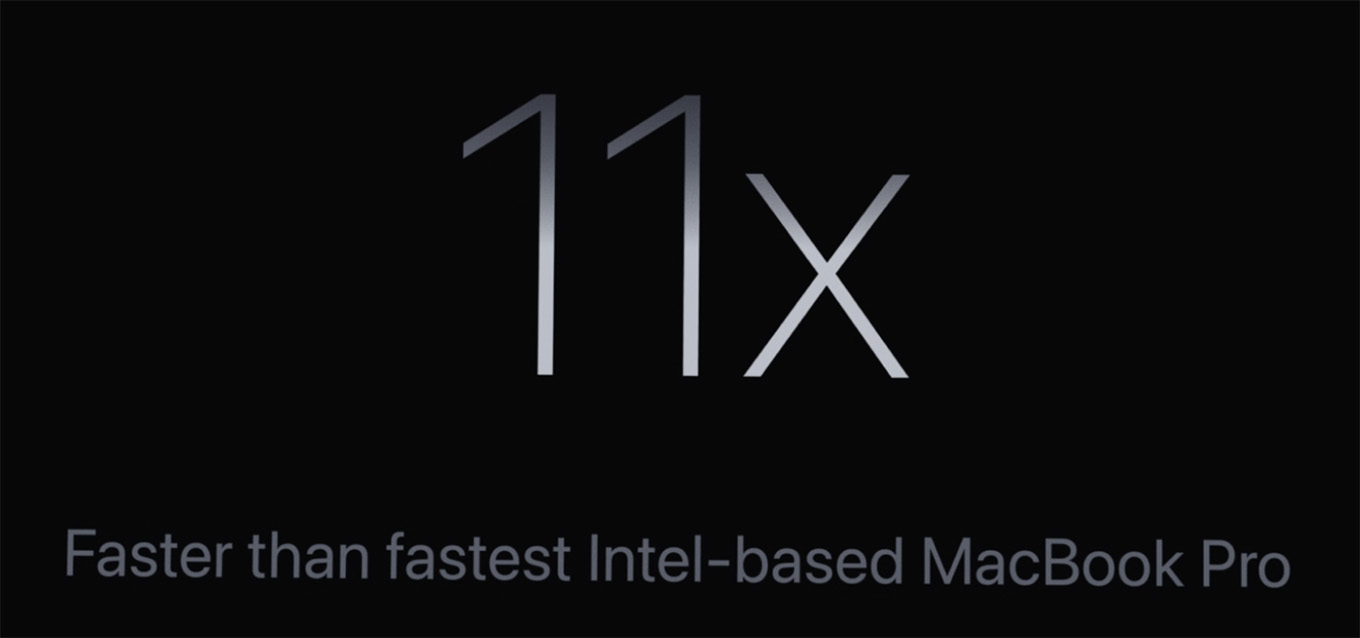 On the night before Halloween (in the US), Apple launched the three latest versions of Apple silicon: M3, M3 Pro and M3 Max.
On the night before Halloween (in the US), Apple launched the three latest versions of Apple silicon: M3, M3 Pro and M3 Max.
The computers that use them haven’t shipped yet – so we don’t know what their real-world performance will be. But, that certainly doesn’t stop anyone from speculating. The trade press is filled with rumors, guesses, and tentative specs.
So, here are my thoughts on what media producers and editors should consider.

(Image courtesy: Apple Inc.)
IN GENERAL
As Adam Wilt points out: “When it comes to basic editing, Crayne’s Law still applies: ‘All computers wait at the same speed.’” Any M1, M2 or M3-series chip is easily able to edit HD or 4K with no problems.
Based on the performance of M2-series SoCs, any M3 SoC will be more than adequate for any single-camera editing up to and including 8K using the internal drive. (Probably 12K as well, but I need to know more about the base-level M3 before I make a definitive statement. The M3 Pro and M3 Max can handle anything you throw at them.)
While the M3 can easily handle simple multicam editing, the M3 Pro and M3 Max would be a better option if lots of multicam streams are at the center of your editing life. However, the gating factor on multicam editing is the speed of your storage.
If you spend more time rendering than editing, the M3 Max is the better option due to its greater GPU count and Dynamic Cacheing. The M3 Ultra will be faster yet, but it hasn’t been announced yet.
There’s no doubt NLE software will expand to take advantage of these new chips. Again, quoting Adam Wilt: “For example, realtime transcription during ingest; background stabilization; audio correction and synching; color correction analysis on all clips during ingest; machine-learning-based assistant-editor-style keywording / logging / categorization while you work; dynamic smart binning based on script analysis or transcription output; predictive background rendering continually as you work instead of waiting until you pause for a few seconds; ML-based refocus/defocus/bokeh, noise reduction, smart retouching; and so on – because software, like a gas, expands to fill the space available.”
But for basic editing, we have already reached the point where our computers are fast enough. The hardware already is FAR faster than software can currently utilize. Developers need time to catch up.
Keep in mind that, if you have the money, buy whatever you want. ANY M3 system will perform well and last for years. But, for those on a budget, the questions are different.
It isn’t really a question of whether these computers are adequate for media editing. Of course they are. They are outstanding systems. Based solely on what Apple has delivered in the past, these are state-of-the-art systems. But, that isn’t the most important question. Here are the questions I think you should be thinking about.
These questions can’t fully be answered until Apple ships the hardware and we can do tests. But here’s my current thinking.
THOUGHTS ON PERFORMANCE
Apple’s presentation was remarkably unrevealing. It contained lots of statements such as: “The M3 is X% faster”, but it never described how the tests were conducted, how the system was configured, what software was used, even what computer was used to run the tests.
I don’t doubt the M3 is faster. But we really have NO idea what “faster” really means. To quote Adam Wilt, again: “Fast is much faster than Slow, but Darned Fast isn’t much slower than Darned Fastest.”
For now, there is lots of speculation, but no facts. That is not an ideal situation to be making buying decisions. Be patient.
WHICH CHIP IS “BEST” FOR MY KIND OF EDITING?
Video editing isn’t just the CPU, it’s the entire system: CPU, GPU, RAM, storage, ports … everything. Based on my tests with M2 systems, mid-level configurations provide the best balance between cost and performance.
But we will need to wait for actual systems to ship and tests to be done to know for sure. Patience is called for.
UPGRADE AN M2-SYSTEM?
Based on Apple’s presentation and current specs, while the M3 family is faster, it is not so much faster as to require upgrading any M2 system. Why? Because an M2 Max SoC already handles every form of video editing up to 12K.
As well, an M2 Pro or M2 Max chip can easily edit up to 40 streams of 4K multicam media, depending upon the speed of your storage.
Apple reports that the M3 is about 20% faster than the M2 – and the M2 is already fast enough. There’s no big benefit to M2 editors in upgrading.
UPGRADE AN M1-SYSTEM?
Compared to M1 systems, Apple reports speed improvements with the M3 family between 35 – 200%. If you principally edit, you won’t see much difference. But if you principally render, the speed benefit might be significant.
I currently own and use an M1 Pro MacBook Pro. It meets all my editing needs, but I principally edit, not render.
If your current M1 computer feels slow for the work you are doing, an upgrade will improve things. However, keep in mind that the image and audio quality between ANY two computers will be the same. What you are buying is speed, not quality.
UPGRADE AN OLDER MAC PRO?
Yes. The M3 Max blows the doors off any Intel-based Mac Pro, with the exception of those needing PCIe cards as part of their workflow. There, the M2 Mac Pro is the better choice.
Speed improvements from 5 – 10X should be expected.

(Image courtesy: Apple Inc.)
UPGRADE AN INTEL-BASED MAC?
Generally, yes, because you need to transition to Apple silicon because in a few more years, Apple won’t support Intel gear.
A CAUTION: However – and this is important – there is a big lag in scientific software moving to Apple silicon. My sister, who is an atmospheric scientist, can’t leave Intel Macs because the software she needs doesn’t support these new chips.
But, if you aren’t involved in scientific research, Apple silicon is multiple times faster than any Intel system. Testing my M2 Max Mac Studio showed performance gains between 5 – 15X compared to a 2017 iMac with an i5 CPU. M3 systems will be even faster.
ANOTHER CAUTION. If you are running older software, you will also need to upgrade to macOS Sonoma to run this new hardware. That means a lot of older software, fonts, plug-ins – maybe even media – won’t work. Do your research to determine the impact on your studio and expect to spend a day or two making the conversion. (It took me a day to bring a new Mac Studio online.)
Apple silicon is the future – and the future looks VERY bright. But the transition from an older system to a new one will have bumps. The longer you wait, the bigger those bumps will be.
IS AN M3-SERIES COMPUTER REALLY NECESSARY?
No. Of course not. You are successfully editing now on much older gear. But the march of technology does not stop. While the gear you have now will run for years, Apple won’t support it for years.
In general, Apple supports hardware for about seven years after initial release. After that, you are locked into the operating system and software that runs on your gear. I know editors who are happily editing on 2009 Mac Pros running Final Cut Pro 7. That’s perfectly fine as long as the gear keeps running.
But, when it breaks, you have a problem.
WHAT DOES THE FUTURE HOLD
It takes four years to develop a new M-series chip. This means Apple is probably currently developing:
And each will be faster than the ones before it – because that’s how technology works. There will always be a newer, faster system “just around the corner.” This new M3 family continues Apple’s development of stunning new chips. A trend that will continue long into the future.
Whether an M3 computer is right for you is something only you can decide. Personally, I would wait for test results and real-world analysis before making a final decision. In all likelihood, you won’t need a top-of-the-line computer to get your work done quickly and well.
But is Apple silicon the future? Absolutely yes.
19 Responses to Larry’s Initial Thoughts on Apple M3-series Chips
The future for apple computers is already here as we all know – the M series of chips regardless of which existing version or forthcoming version. And the future of the software we love, will currently work with the M family of chips as well as Intel, soon newer versions of that software will not.
Having said the above, the sooner we can transition to a M chip computer, the better we will all be, both software and hardware wise. And yes, I still run a 2010 Mac Pro with PCIe cards, and a 2013 Trash Can Mac Pro – but I soon will have to get on some M chip Mac Computer, again for software, hardware and most importantly relevant thunderbolt 3/4 ports for the kind of speed we now really need.
Just my thoughts.
Lou
Lou:
All true. But DON’T get rid of you older gear and software.
All too often we need access to older legacy formats, which new tech doesn’t support.
Larry
I’m currently editing on a 13” MacBook Pro from 2020. I’m hitting a wall in multicam editing and 3D rendering, and must upgrade very soon. I have a budget of $2400 and can get an entry level M2 Max Studio, which is what I was planning to do. But now, for the same money, I can get the upper level M3 Pro 14” MacBook Pro. Do you think I will miss the additional GPU cores/RAM by choosing the M3?
I had given up on having a portable computer with enough power as I could not really afford it. But now it looks like I can. Do you think I’ll regret losing the power of the M2 Studio over the portability of the M3? Or will I just be blown away at leaving the Intel chip behind that I won’t really notice the difference between an M2 or M3?
My choices:
M2 Max Studio 12 core CPU – 30 core GPU – 16 core NE – 32GB RAM
M3 Pro MBP 12 core CPU – 18 core GPU – 16 core NE – 18GB RAM
Scott, you may have seen this, but as more performance measurements come out, you’ll have more data to make the best decision. Based on early test scores, the M3 Pro has only a slight speed advantage over the M2 Pro. But the M3 Max is 50% faster, nearer the M2 Ultra speed. https://www.macrumors.com/review/m3-macbook-pro/
The question I have is while it’s worth (and needed) to upgrade from an Intel Mac, which is the better choice – the M3 to future proof or the M2 and enjoy the savings as those prices will drop as the M3’s come online?
Tom:
I’ve never found “future-proofing” to be a good strategy. Apple thought they “future-proofed” the cylindrical Mac Pro only to discover that GPU technology moved in a different direction. Both the M2 and M3 are totally adequate for video editing. Both will be outdated when the M4 comes out. Get the system you can afford, that meets your needs that you see for the next year or two – then add a bit more RAM and storage.
Larry
100% agree with Larry right there!!
We need to remember that for a company to stay in business, it needs new unique sales of something every year. For Apple about half of their sales have been phones and recently they just raised their prices for subscriptions. The M-series processors have to do their part to keep the revenue growing.
To take the (prices will drop) comparison even further. If prices are the same, would an M1 with more RAM be better performance than an M2 without additional RAM? Upgrading from Intel Core i9.
Martin:
It depends upon the editing you are doing and your budget. More RAM is needed for larger frame sizes, faster frame rates and multicam. If you are editing single camera HD, base level RAM is fine.
ANY M-series computer is better than Intel. But you need to consider the entire package, not just the RAM.
Larry
Ah the choices! We videographers/photographers that aren’t computer guys, get overwhelmed. I wish I could just list my editing needs & budget, & up pops the top few best Mac options.
I was going to buy a Macbook Pro last summer, but decided to wait until next year. I was delighted to know that Apple was going to release new M3 versions so soon. But I was very disappointed when I realized the weird RAM configuration for these machines. I only need a Pro chip, not a Max, but I do need more than 36 miserable GB. I know that I cannot force Apple to build a custom computer for my needs, but I don’t think it’s too much to ask to buy more RAM. Or to have more options for the other Max chips. If I want 64GB, Apple makes me buy a really expensive configuration. I mean much more expensive than this summer. Does anyone understand this?
Antonio:
I understand your frustration, but perhaps you don’t need 64GB of RAM.
Apples unified memory means that you can do in 32 what used to take 64. I’ve been very impressed with what I can do on my 32 GB system.
Larry
You are right. I don’t need 64GB now. But I intend to use this system for years, and the software is always asking for more. The real advance would be to make these machines upgradeable. For now, the weird RAM configuration seems too confusing, forcing the user to choose a maxed chip that is not needed, only for the RAM and, of course, paying for it.
Thank you for your impressions on the 32GB. Perhaps I am too cautious, but the minimum requirements of the software companies are very specific, and the amount of Apple memory is for both the CPU and the GPU.
Antonio:
I totally understand the fear of buying a system with too little …”something.”
Keep in mind that, unlike Intel systems, Apple silicon does not duplicate files. Older systems keep one copy for the CPU (Intel) and a second for the GPU (AMD), because these two chips required different file formats.
Using Unified Memory Apple only needs to keep one version of the file in RAM at any time.
IF you can afford it and your computer system supports it, get 64 GB. However, 32 GB is fine for all editing at 4K or smaller frame sizes. And, using the 32 GB on my M1 Pro MacBook Pro, I was able to stream more than 35 streams of 4K video.
So, 32 GB is definitely NOT “bad”.
Larry
Hi Larry, I’m still using a 2014 Macbook Pro 15″ i7 with Nvidia card and 16GB RAM. My use is just to produce simple training videos using screen capture and simple editing using Davinci Resolve. Will an M3 Pro 11Core CPU, 14 Core GPU and 18GB Memory be more than enough for the task?
Imi:
Totally.
External storage will still be necessary and don’t get less than 512 GB of storage, i TB is better.
Larry
Thanks Larry….
I save everything to cloud… and I dont do this full time. I only create training videos and found that my existing 512MB was sufficient for 7hrs video and all the other stuff i do.
What is the external storage for?
Imi:
External storage will be far faster than the cloud. It is also more secure. However, it is only needed if you don’t have sufficient storage room on your computer and if working with media in the cloud is too slow.
Larry
Fair point. I think I may pay 200 extra and get the 1TB which will allow me to hold more courses on local SSD synched with cloud. The files arent big as course lectures are rarely longer than 10 mins each.
Thanks for your advice.